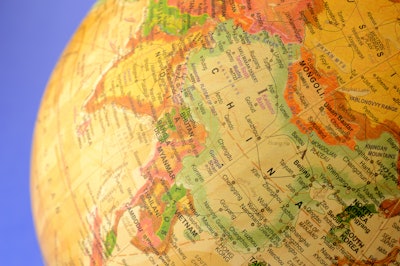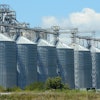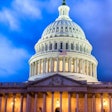
During President Biden’s visit to Tokyo on Monday, the U.S. announced the countries that are joining the newIndo-Pacific Economic Framework (IPEF).
IPEF features a dozen initial partners: Australia, Brunei, India, Indonesia, Japan, Republic of Korea, Malaysia, New Zealand, the Philippines, Singapore, Thailand and Vietnam. There are other countries that could conceivably join IPEF as it moves forward.
Not a traditional trade agreement
According toan AP report,Monday’s announcement signals the start of talks among participating countries to decide what will ultimately be in the framework. In a broad sense, it’s a way for the U.S. to lay down a marker signaling its commitment to remain a leading force in Asia.
“We’re writing the new rules for the 21st century economy,” Biden said at the announcement. “They’re going to help all our countries’ economies grow faster and fairer. We’ll do that by taking on some of the most acute challenges that drag down growth.”
TheU.S. Grains Council (USGC)welcomed the IPEF development. USGC said it represents a new opportunity for the U.S. to strengthen economic ties with 12 other countries that collectively make up 40% of the world’s GDP.
“The IPEF is a new approach to trade negotiations that will hopefully still create the same positive, high-standard outcomes for U.S. farmers as traditional trade agreements,” said USGC President and CEO Ryan LeGrand.
“We look forward to engaging the office of the U.S. Trade Representative (USTR) on IPEF negotiations to ensure grain and ethanol can freely move around the world.”
The importance Indo-Pacific region
According to areleasefrom the White House, IPEF will enable the U.S. and its allies "to decide on rules of the road that ensure American workers, small businesses and ranchers can compete in the Indo-Pacific."
Tackling inflation is a top economic priority, and the White House feels this framework will help lower costs by making supply chains more resilient in the long term, protecting the U.S. against costly disruptions that lead to higher prices for consumers.
U.S. foreign direct investment in the region totaled more than $969 billion in 2020 and has nearly doubled in the last decade. The U.S. is the leading exporter of services to the region.
Trade with the Indo-Pacific supports more than three million American jobs and is the source of nearly $900 billion in foreign direct investment in the U.S., notes the White House. With 60% of the world’s population, the Indo‑Pacific is projected to be the largest contributor to global growth over the next 30 years.
"The fact that this is not a traditional free trade agreement is a feature of IPEF not a bug," said National Security Advisor Jake Sullivan.
"Our fundamental view is that the new landscape and the new challenges we face need a new approach, and we will shape the substance of this effort together with our partners."
Focus of IPEF
The U.S. and its partners in the region believe success comes from harnessing innovation — especially the transformations in the clean energy, digital and technology sectors — while fortifying economies against a range of threats, from fragile supply chains to corruption to tax havens.
The White House said past models of economic engagement did not address these challenges.
"In IPEF, we are seeking to develop a first-of-its-kind supply chain agreement that better anticipates, predicts, and, importantly, prevents disruptions in supply chains," said Secretary of Commerce Gina Raimondo.
The framework will focus on four key pillars to establish high-standard commitments that will deepen our economic engagement in the region:
- Connected economy: On trade, the U.S. will engage comprehensively with its partners on a wide range of issues and pursue high-standard rules of the road in the digital economy, including standards on cross-border data flows and data localization.
- Resilient economy: First-of-their-kind supply chain commitments will better anticipate and prevent disruptions in supply chains to create a more resilient economy and guard against price spikes that increase costs for American families. This will be accomplished by establishing an early warning system, mapping critical mineral supply chains, improving traceability in key sectors and coordinating on diversification efforts.
- 清洁经济:最早建立的一个承诺clean energy, decarbonization, and infrastructure that promote good-paying job will accelerate efforts to tackle the climate crisis, including in the areas of renewable energy, carbon removal, energy efficiency standards and new measures to combat methane emissions.
- Fair economy: Commitments to enact and enforce effective tax, anti-money laundering, and anti-bribery regimes that are in line with existing U.S. multilateral obligations to promote a fair economy.
Former trade agreement, the TPP
IPEF is seen as a replacement for the formerTrans-Pacific Partnership (TPP).
On his first day in office in January 2017, former President Trump signed an executive order removing the U.S. from the TPP and declared an end to the era of multinational trade agreements.
The TPP was a 12-nation trade deal that included the U.S., Japan, Mexico, Canada, Australia, New Zealand, Vietnam, Peru, Chile, Malaysia, Singapore and Brunei.
Still need to remove trade barriers
Brian Kuehl, executive director ofFarmers for Free Trade, said the Indo-Pacific region long has been seen as an essential market for growing American food and agricultural exports. He also noted that as populations in the region grow in numbers and prosperity, they look to American farmers for protein, high-quality produce, and other food and ag products.
Kuehl said trade barriers must be removed so American farmers can position themselves as a viable regional alternative to China, which dominates the region.
“Farmers continue to feel the sting of recent American trade policy that has erected rather than reduced trade barriers, both with the withdrawal from the Trans-Pacific Partnership and a barrage of tariffs that have targeted farmers over the past four years,” Kuehl said.
“The Indo Pacific Economic Framework is a laudable first step to reengaging in the region," he continued. "However, it will be essential that the administration articulate how an agreement that does not currently include tariff reduction will provide new market access and economic opportunities for farmers.”






















